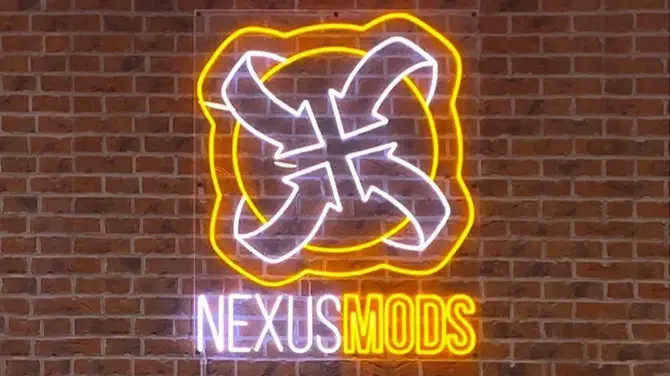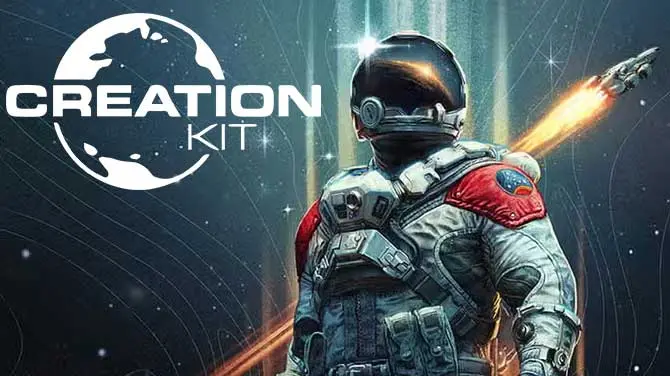About this mod
The purpose of this guide is to give modders the information they need to maximize visuals and lower vram. There is great confusion about what to do, how to do, when to do with regard to texture formats, resolution, mipmaps etc. Understand this guide and you gain solid footing for retaining the greatest visual fidelity at the lowest vram cost. I
- Permissions and credits
This mod will contain 8 or more mods improved in accordance to these principles + improvements over Bethesda's High Resolution Texture mod.
The Bethesda set will be see arguably the most important textures improved.
Demystifying Textures - Strategies to simultaneously maximize visuals and lower VRAM
This guide was written with 1GB video cards in mind.
If you have a 2GB card, or that or greater, is your target audience then normal maps should be saved as BC5.
I do not believe most fallout 4 diffuse are of sufficient quality to merit BC7, but it is a solid option between uncompressed and DTX1.
In the end, if visuals are your sole concern and you have beefy video card with 4GB of VRAM, use the latest BC5 and BC7 compression standards.
However, if you have a mid-range 1-2GB card and are equally concerned about FPS and visuals, this is the guide for you.
A mesh is a 2D surface or 3D shape, basically the bones and muscles of an object in the game.
Textures are applied to the surface of a mesh in this layered order: Diffuse (color) map, Normal map and Specular map.
A diffuse map is essentially a photograph.
A normal map is texture sitting above this photograph.
A specular map defines which pixel is shiny and how shiny is each pixel; assuming specular resolution is equal or higher than diffuse map.
There are 3 primary types of textures: DTX1, DTX5 and ATI2N (aka 3DC+ or BC5).
DTX5 is only to be used for photographs, diffuse textures, that use smooth transitions or contain varying amounts of transparency; i.e., leaf edges.
DTX1 is for photographs that contain no transparency or photograph that contains areas of 100% transparency.
Whenever you are modding, you must have mipmaps in mind as this dictates the quality for everyone.
If your immediate texture is good, mipmaps bad; the whole is bad.
Mipmaps are smaller version of the texture the game uses for performance purposes and user settings (Texture quality setting)
So texture quality ultra probably ignores mipmaps altogether, but not everyone can run ultra; most cannot.
But everyone can or should be able to run with high quality texture setting which makes extensive use of mipmaps.
Mipmaps are also used to see things in the immediate distance. A great brick texture will look like shit from a distance if mipmaps crap.
Whereas LOD is used to see things vary far away; mountains in the distance.
Coming back to diffuse textures; photographs.
The problem with DTX1 is that it produces artifacts of details especially at 1024 or lower resolutions.
DTX1 was designed for diffuse maps. Diffuse maps are also called color maps, why?
If your only specifying color, basically no artifact with DTX1, hence.
It is not sufficient to say diffuse maps are color maps.
The detail you see will be the sum of the diffuse and normal maps, so if the normal map has relatively no detail, the diffuse has to pick up the slack.
I'm sorry I don't consider shine as true detail.
However, its important to know that the detail you do include in the diffuse will appear vary flat.
Where the detail in the normal map will effectively appear above surface; 3D. Normal maps trick the eye, all you need to know.
Let's explore mipmaps further.
Concerning DTX1, if you're saving a normal map and it or its first sibling (mipmap) resolution is 1024 or under, artifacts will be visible.
Concerning DTX1, if you're saving a detailed color map, once again, it or its first sibling (mipmap) will produce visible artifacts for res of 1024 and under.
For these reasons, the first mipmap for both diffuse and normal maps should be 1280, which means the parent texture should be 2560.
There is a myth that the resolution of textures must be a base of 2.
It is is true that some meshes will refuse textures not in this format, however more often then not it is not a problem for the same category of texture.
If you don't use mipmaps the base 2 arguement is true as the GPU has to calculate the mipmaps on the fly, game engine forces this, and takes a penalty during calculation because its not a base 2 resolution.
But if you include mipmaps, that whole argument goes into the trash, as mipmaps are essentially precalculation/pregenerated textures.
There are a few occasions where the mesh will reject textures which are not base 2, but the VRAM savings outweigh the con.
So if the normal map isn't bringing the detail, the diffuse has to pick the slack, if they both bring detail they may complement or conflict.
When the diffuse has to pick up the slack because the normal map is shit, means you increase detail in diffuse that's when you upscale a 2k texture to 2560 and generate mipmaps. Genuine Fractals is best, Fant is pretty good and free with Paint Net.
If the textures contains minimum detail saving as 2k or 1536 is permissible as so long as the 1st mipmap is of sufficient quality; check it.
DTX1 uses half the VRAM as DTX5, sometimes its worth sacrificing smooth transition i.e. a window why not make it 100% transparent to save 50% vram.
Let's talk about specular maps.
They are a little deceiving as visually they can contain a lot of details.
And as we said DTX1 produces artifacts of these details at lower resolutions.
However, you have to remember that specular maps are used only as a shine factor.
However, the specular map can highlight detail and reduce detail visible (problem areas of the texture), but remember it accomplishes this with shine.
Likely you are not going to notice a shiny artifact.
Let's about Bethesda's High Resolution texture pack; a mix of 2k and 4k textures.
4K diffuse DTX1, 4k normal map ATI2N, 4K specular map ATI2N (~12MB of vram for 1 texture!)
Leaving aside the few gains in most instances, there is a lot of stupidity.
5MB dedicated to how each pixel shines; monumentally stupid unless we are talking about weapons or armor or external texture such as the floor or a wall.
With respect to specular maps, I would use either a 1280 or 1536 resolution for most textures and encode as DTX1.
Artifacts will be hardcoded into the texture, but because of how the texture will be used, you won't see them.
Like I said, the odds that you see a shine artifact are next to none, you'd need to stare and force your eyes, nobody does this in a shooter unless you're saying hello :)
The end result, same shine, 1MB or for more detailed shine (increased mipmap res), 1.5-2MB for specular; massive improvement over 5MB.
Up to 3k resolution for armor and weapons makes sense, but 4K is a waist of 4k and vram.
Because it's bethesda's texture pack, I don't need to worry about the diffuse being too detailed and having to upscale unless I add detail.
And I would do this if the normal map was lacking in detail.
Now let's talk about the most controversial texture normal maps, the modding community is pulled in so many directions on this one.
In my opinion the most intellegent practice is this:
You've seen it before, vary plain, dull, normal maps that you would downscale to 512 resolution without any loss of detail.
For these, you should set the resolution to 640 and encode as ATI2 with mipmaps, everything, always with mipmaps.
For detailed normal maps you will upscale to and save as DTX1 despite what bethesda or nvidia says.
I have come to these guidelines and read through all documentation on the matter; they paint a one-sided coin picture.
So for 2K normal maps, you will upscale (genuine fractals) to 2560 and save as DTX1.
So that the base normal map and the first mipmap contain no artifacts; who gives two shits about people playing with medium/low quality texture setting; Bethesda.
You would upscale to 3072 for lod purposes, for me, brick; I hate ugly brick even from a distance, screw it I accept 5k brick for diffuse for HQ mipmaps.
For 4K normal map, I would upscale to 5120, 2560 is plenty of appreciable detail for the first mipmap.
For 1k ATI2N, upscale to 1536 save as DTX1.
Following these guidelines, the normal maps will have seriously improved normal maps with improved mipmaps and much lower vram; everything wins.
Summary:
Diffuse: DTX1 or DTX5(if needed or desired/consider 50% vram saving for DTX1) Detail partner B (if partner A doesn't provide)
Normal Map: Under 1024 res ->ATI2N, 1024 and up, upscale 25-50% (genuine fractals/Paint Net) save as DTX1. (Detail partner A)
Specular Map (shine): up to 3K res for armor and weapons, 1280 or 1536 for everything else, save either as DTX1
One exception for normal maps is if you are overlaying normal maps. The act of this produces too much artifact for high resolution alone to combat. In this instance save as ATI2N.
Artifacts for DTX1 cannot be seen at higher resolutions or via the specular map.
Artifacts will be seen for 1024 or under normal maps and corresponding mipmaps.
Therefore normal maps are upscaled to 2560 and saved as DTX1, improving parent and child quality of normal maps.
Diffuse texture cannot produce artifacts unless they are both detailed and the parent or child resolution is equal or less than 1024.
DTX5 is depreciated for normal maps by ATI2N.
DTX5 and ATI2N is depreciated for specular maps (one exception might be floor textures, if you encode as ATI2N, no demerit points)
In fact for floors, either if bethesda did not include a specular map for the base game texture, then either exclude it or use ATI2N.
The only other place where ATI2N normal maps makes sense is external textures like walls, but I cannot foresee any benefit for example of a high res DTX1 specular for cement over a high res ATI2N; high res means 3K.
In fact, besides armor and weapons, only its an external texture like a grainy floor or grainy wall, only then does 3k specular make sense.
To use DTX5 or ATI2N for specular maps is moreoften wanton disregard; exception weapons, armor, external floors or walls.
To release a texture mod without Resolution, Mipmap or VRAM individual texture consideration is wanton disregard.
The diffuse and normal maps must work together with regard to detail, if one lacks, the other must pick the slack.
Happy modding.
End of rant.








